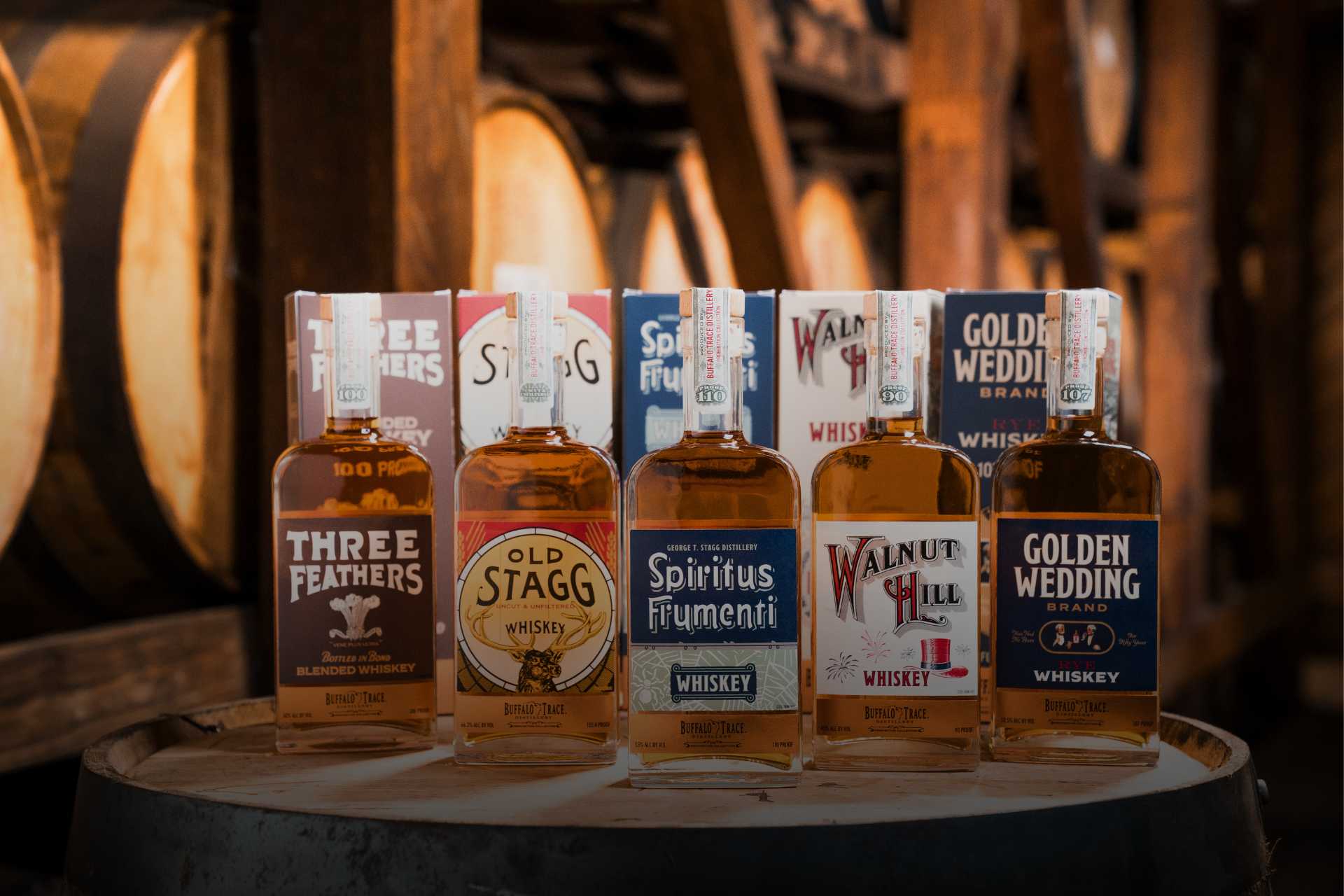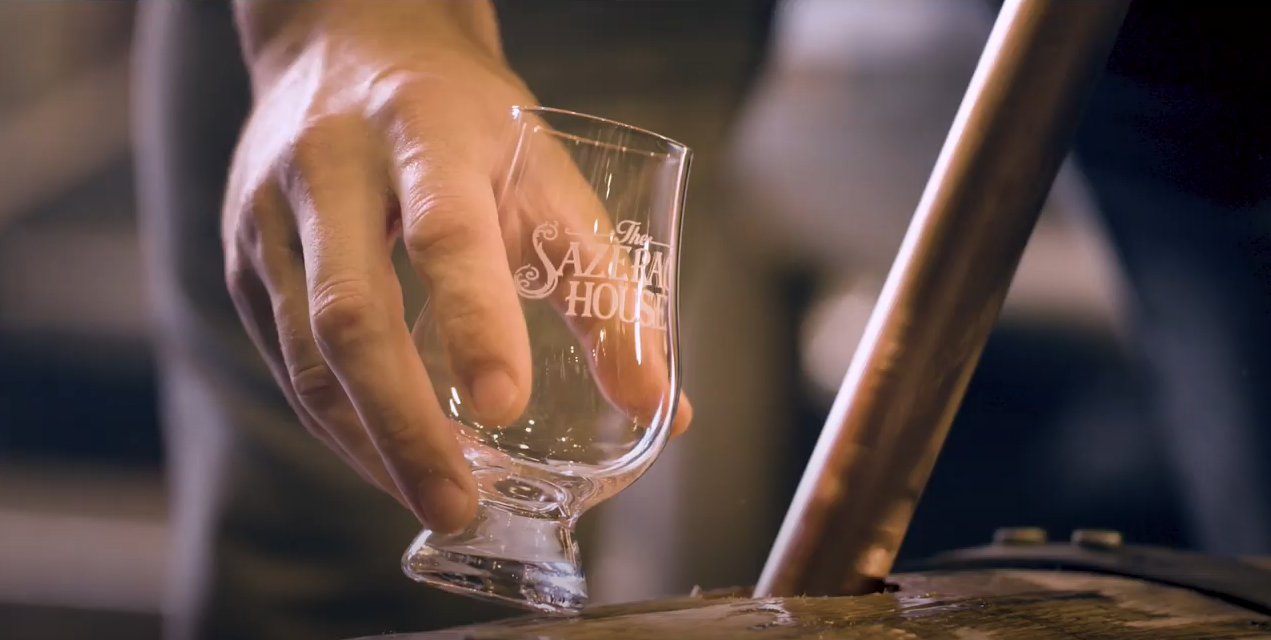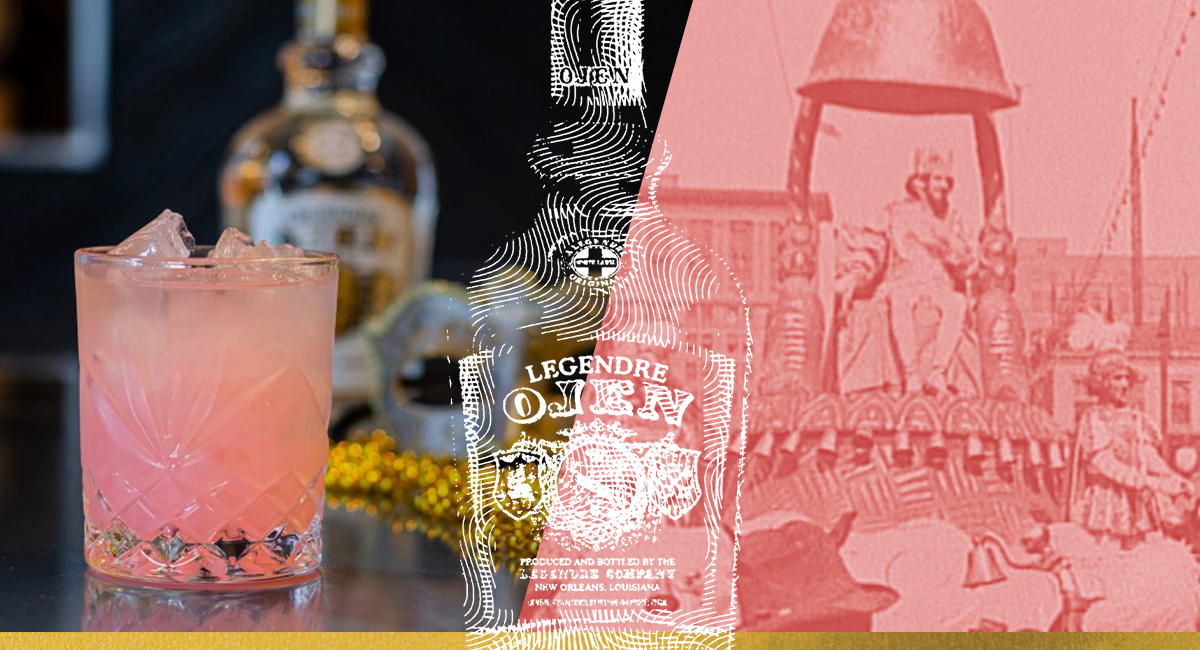Only a city as fantastical as New Orleans could conjure up a cocktail fairytale worthy of Walt Disney’s admiration! But such is the case with the once-upon-a-time, rags-to-riches story of the Ojen Cocktail!
As liqueurs go, Ojen was born of modest means in the 1830s. Created and bottled near Ojén, Spain, it really didn’t make much of a splash until a fateful voyage to New Orleans. There – with an absinthe ban leaving the city sober in ways that didn’t sit well and in the creative hands of its bartenders – magic was made.
A simple mixture of Peychaud’s Bitters and Ojen swizzled deliciously and ever so delicately over ice—the Ojen Cocktail debuted to instant and immense popularity among the well-heeled, bejeweled upper-crust set. Holding court at the Boston Club, an elite gentlemen’s club, with the likes of the Sazerac and the Ramos Gin Fizz, the shamelessly sweet Ojen Cocktail was so embraced by the blue-bloods it was sarcastically labeled the “preferred cocktail of the Rex ruling class.â€
Class conceit and humor aside, drinking the Ojen Cocktail before parading was considered good luck by the Krewe of Rex and quickly came to be called the Mardi Gras drink. Its place in carnival lore was cemented for a long, long time, until…its magic suddenly disappeared.
One day in the 1990s, without warning, Ojen production stopped, and New Orleans panicked. That’s when Cedric Martin of Martin Wine Cellar, recognizing its importance to our culture, acquired the last batch of 6,000 bottles. Hoarded away, Martin’s stash proved just enough to last two decades, and just long enough for the Sazerac Company to rescue and reverse-engineer a recipe from a few existing bottles.
It was a revival years in the making, with the utmost attention given to recreating its unique flavor profile, but when the Sazerac Company re-released Legendre Ojen in 2016, they had revived something “as close as possible to the original.â€
Named to honor New Orleanian J. Marion Legendre, the inventor of Herbsaint, Legendre Ojen pays respect to its adopted home and ensures, with any luck, that one Mardi Gras tradition will reign supreme for future generations and live on, happily ever after.
Events

Buffalo Trace Prohibition Collection Tasting Experience
Step inside one of the Sazerac House’s intimate speakeasies for a rare and immersive tasting experience featuring the Buffalo Trace Prohibition Collection, Series 1. This exclusive collection showcases five expressions recreated to reflect the styles of whiskey legally produced during Prohibition, when Buffalo Trace was one of the few distilleries permitted to operate for medicinal purposes. Guided by our expert bourbon stewards, guests will explore the history of the Prohibition era and its impact on American whiskey culture, all while enjoying a curated tasting of the complete series.

Walking with Whiskey
Join our distillery team for an in-depth journey through the whiskey making process. From grain to bottle, you'll walk through the steps of making Sazerac Rye Whiskey and conclude with a Sazerac Rye Cocktail Demo.

